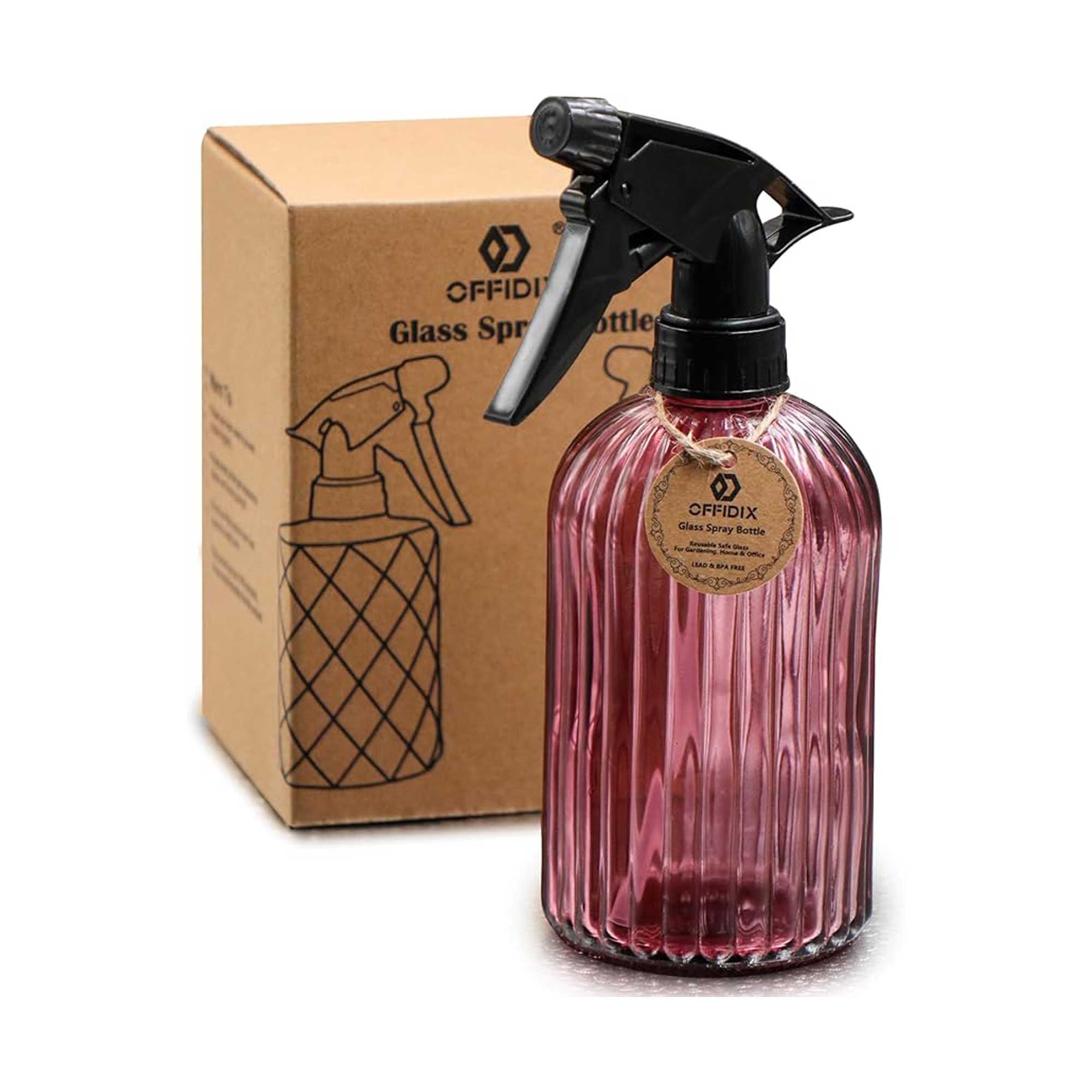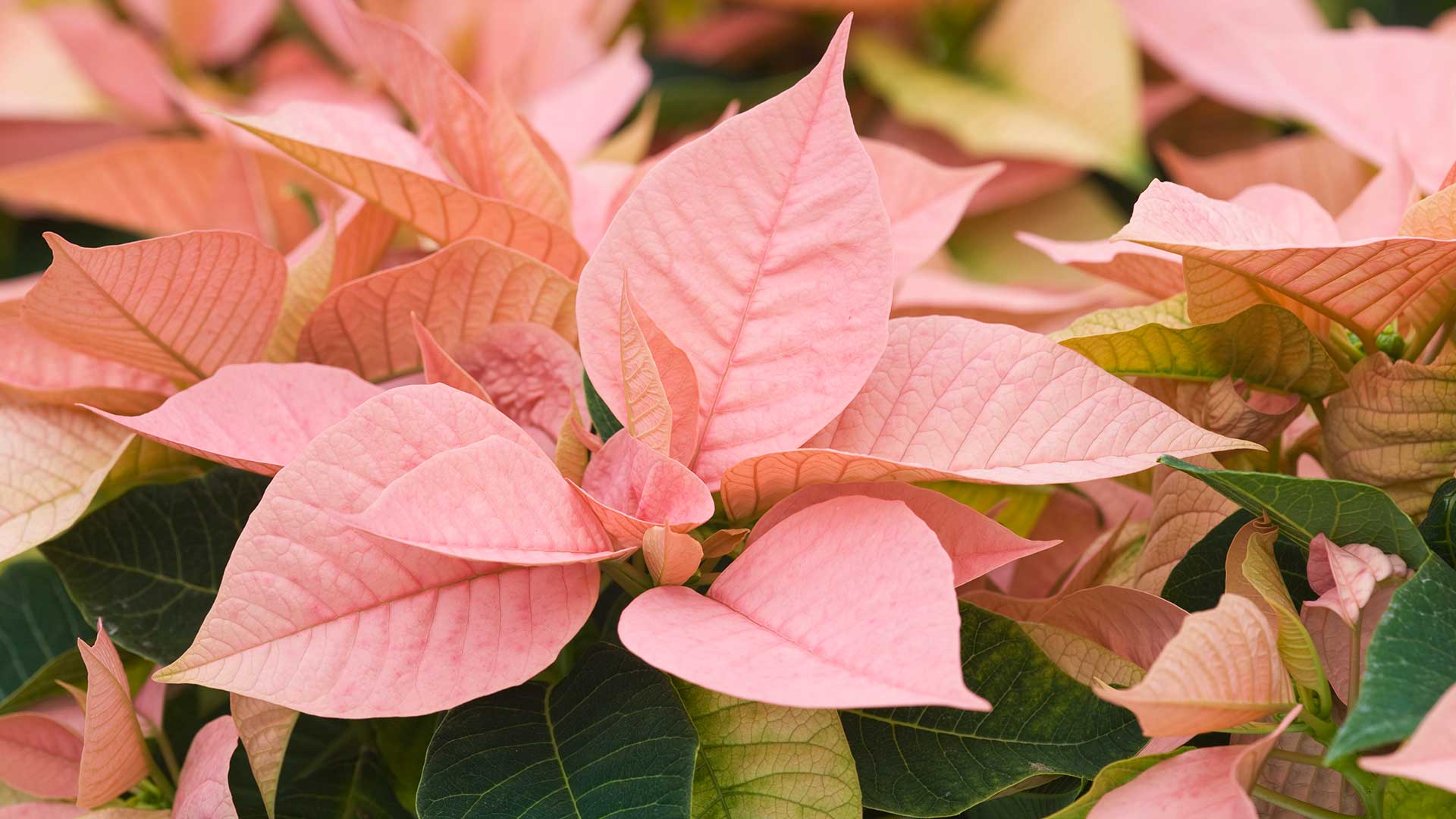
You might be wondering how to care for poinsettias as we enter the festive season. These jolly plants are a popular gift for the holidays, and if you look after them properly, they can last for much longer.
You probably won't want a wilted plant as part of your Christmas decorating ideas, so to keep your poinsettia thriving, there are a few key tips to remember. As with all indoor plant care, factors such as watering, temperature, and providing the right amount of light all play their part.
We asked the experts for their advice on caring for these cheerful houseplants. Below, you'll find all the essentials, including tips on helping them bloom again next year.
How to care for poinsettias, according to the pros
While poinsettias lift the spirits with their beautiful bracts, do remember that they have an irritant sap. So, similarly to amaryllis planted in pots (another popular winter houseplant), it's best to keep them away from curious pets and children. You may also wish to wear gardening gloves when handling them, such as these favourite gloves from Sarah Raven.
Choosing your poinsettia

When picking out one of these alluring plants for your home, there are a few dos and don'ts to consider.
Poinsettia expert Dr Susanne Lux notes how a healthy poinsettia with the best chance of a long life will be dense and undamaged, with budding, yellow-green flowers in the centre of the coloured bracts.
"I advise against buying glittered plants," she adds. "As beautiful as the sparkle may be, it’s not good for poinsettias or our environment."
Susanne also warns against choosing a plant that's been kept in a cold place. "Poinsettias placed in a dark corner of a shop, a draughty entrance, or outside in temperatures below 15°C usually lose their leaves within a few days of purchase and often die shortly afterwards."


How to water poinsettias

Knowing how to water plants properly is key when learning how to care for poinsettias. According to Jo Lambell, the founder of Beards & Daisies, they prefer a consistent level of moisture in their soil but don't like to sit in water.
"Allow the top inch of soil to dry out before watering again," she says. "This typically means watering every one to two weeks. Be sure to water thoroughly until it runs out of the drainage holes and avoid letting the pot sit in excess water, as soggy roots can lead to rot." Yellowing leaves can be an indicator of overwatering or poor drainage, she adds.
Claire Bishop, senior plant buyer of Dobbies, also notes how they like a humid environment, so recommends misting their leaves often. This should prevent them from drying out when you have your heating on in winter, she says.

Keep your poinsettia and other humidity-loving houseplants happy over winter and beyond with this well-rated spray bottle from Offidix.
Providing the right conditions for your poinsettia

Jo says, "The ideal temperature for poinsettias is between 18-21°C during the day, and no lower than 15°C at night. Keep them away from drafts, heaters, and cold windowsills, as sudden temperature changes can stress the plant."
In terms of light, Claire recommends placing them in a bright spot, where they’ll get at least six hours of indirect sunlight per day. "However, you should avoid direct sunlight as this could scorch the plant’s leaves," she adds. This tip applies when caring for peace lilies, too, especially in the summer.
Top tip: “When you get home, you’ll need to make the transition from cold to warm as stress-free as possible for the poinsettia, which means it’s best not to move it immediately into a very warm room," says Susanne. "In a cooler, lighter room such as the kitchen or conservatory, your poinsettia can acclimatise in peace." After a few hours, move it to its final location, she adds.
How to keep your poinsettia alive after Christmas, and encourage new blooms

"Once the festive period fades, reduce watering and allow the plant to rest," says Jo. "Cut it back to about 4-6 inches tall, repot if needed, and move it to a slightly cooler, less bright location." You can then move it outdoors when the weather is warm, keeping it in partial shade, she adds. Make sure you bring it back indoors before temperatures drop again – as tender plants, poinsettias need protection from frost.
According to David Denyer of Eflorist, creating a dark environment for poinsettias during the late summer or early autumn is key to getting them to bloom again. They need 12-14 hours of complete darkness every night for about six weeks before they can produce those red bracts, he says. "During the day, expose it to bright, indirect sunlight," adds Jo.
Top tip: You could also consider fertilising poinsettias with a liquid plant food throughout the spring and summer months, as Claire suggests. This will help to encourage blooms next Christmas.
FAQs
Can poinsettias suffer from pest problems?
Pests can be troublesome for poinsettias, so it's worth keeping an eye out.
"Aphids, whiteflies, and mealybugs love to latch onto the delicate leaves," says David. "If you notice your poinsettia leaves curling or sticky, that’s usually a sign of pest infestation. You should immediately isolate the plant to prevent any spread to other plants and treat it with insecticidal soap or neem oil."

How should you care for mini poinsettias?
“Mini poinsettias in tiny pots, gorgeous though they are, have a very small soil volume which means the root balls can dry out or become waterlogged very quickly," says Susanne.
She recommends checking the moisture of the soil daily if possible and watering them by immersion. "To do this, submerge the root ball completely in lukewarm water about every two to three days, or daily if necessary, and let it drain well when you take it out. After about 15 minutes, check whether any excess water has collected in the container or saucer and drain it off."
It's also worth knowing how to repot houseplants, as, according to Susanne, repotting mini poinsettias will help them last longer. She recommends using cactus compost for this, as it allows for good drainage. At Woman & Home, we like the look of the well-rated Westland's cacti and succulent potting mix, available from Amazon.
"A drainage layer and holes at the bottom of the pot will help prevent waterlogging," she adds.

While poinsettias are a festive addition to the home, don't forget about your other indoor plants, too, when outdoor temperatures drop. If you're looking for more advice on how to care for houseplants in winter, our dedicated guide has plenty of practical tips.







